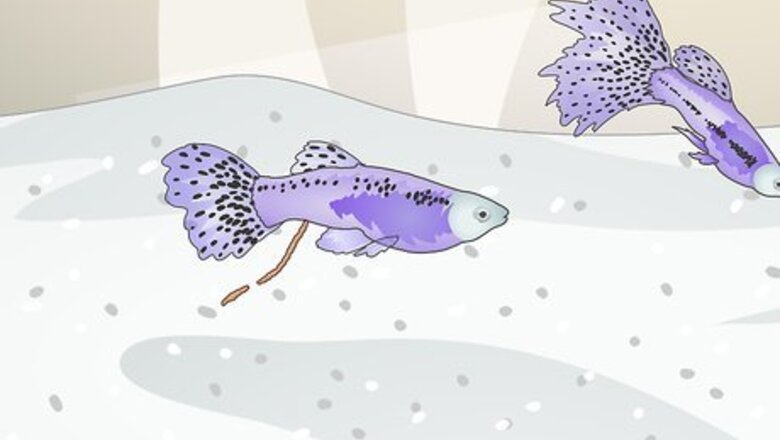
views
X
Expert Source
Doug LudemannAquarium Care Professional
Expert Interview. 27 August 2019.
Fish can live a long time, so establishing a cleaning and feeding routine will make ownership more fun and less stressful.
Learn About the Nitrogen Cycle
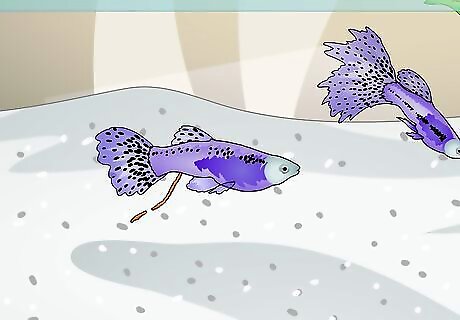
In the first step to the cycle, your fish poops. The waste contains a toxic chemical called ammonia. Ammonia is also produced by leftover food in the tank, so be sure you're not overfeeding your fish. When you test your ammonia in the tank, an ideal level is below 0.25ppm.
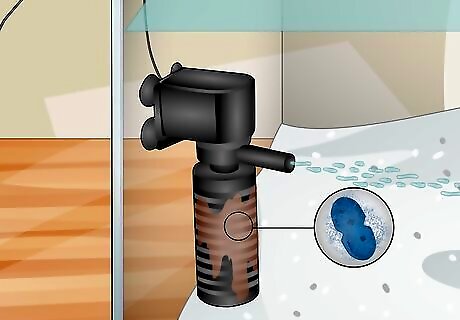
Beneficial bacteria (called nitrosomonas bacteria) digests the ammonia and turns it into nitrites. This bacteria is found in your fish filter. Before you get your fish, run your filter for awhile in the tank and add in fish food to feed the bacteria. When a brown film appears in the filter media, do not wash the filter. This brown film is the nitrosomonas bacteria. Without it, your fish will suffer ammonia poisoning.
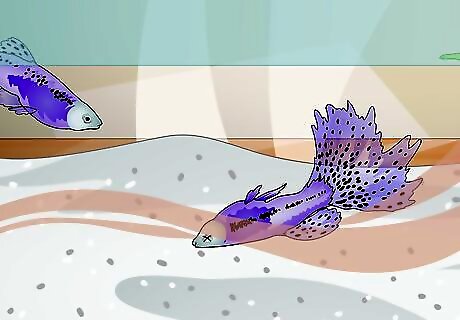
Nitrites are toxic to your fish. When you test them, the ideal level is 0.0ppm.
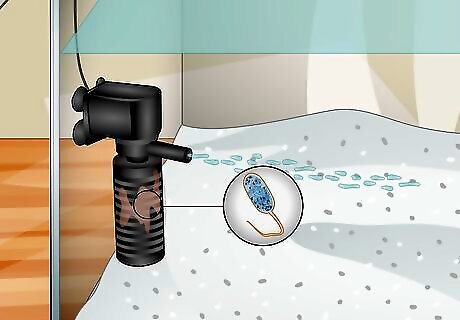
Beneficial bacteria (nitrobacter bacteria) digests the nitrites and turns it into nitrates. As well as the nitrosomonas bacteria, this bacteria is also visible in a brown film in the filter.
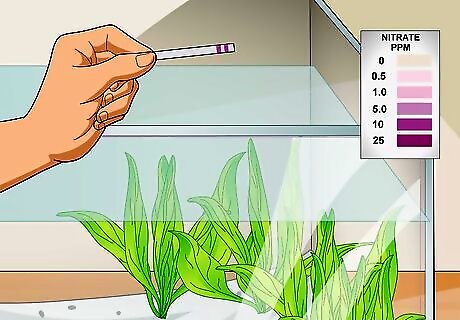
Nitrates should be kept below 20ppm. Plants assist in removing nitrates, but you should do at least a one fourth water change every week to keep the nitrates down.
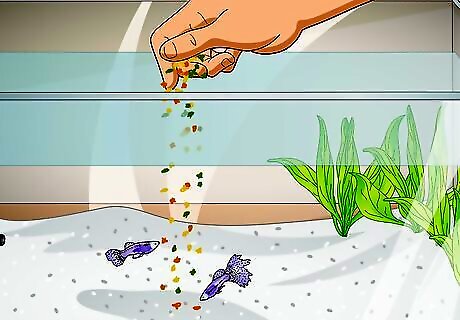
The cycle starts again when you put fish food in the tank. You should only get your fish when your tank is fully cycled. This means the ammonia and nitrites are 0ppm and the nitrates are below 20ppm. When you add your fish, only add up to three at a time or your ammonia will rise.
Choosing Your Fish
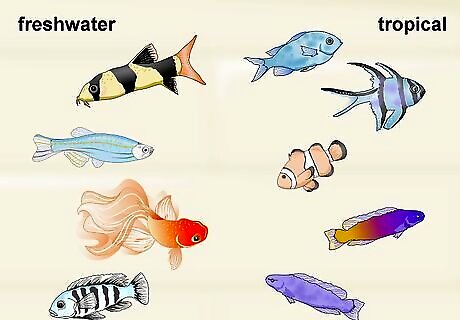
Decide on freshwater or saltwater. Freshwater fish are the best choice for beginners, as they require less aquarium maintenance. They also generally have fewer health issues in home aquariums. Saltwater fish require saltwater aquariums and are more challenging to maintain. However, they are quite beautiful.
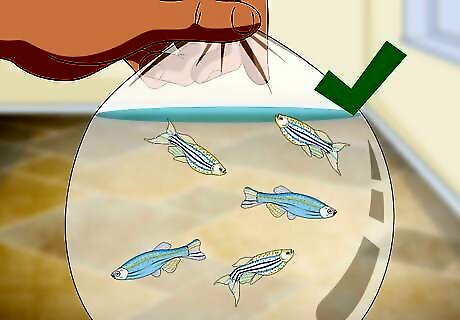
Go with a small breed. In many cases, small fish are peaceful breeds. They also require less tank space, making them a good choice for first-time fish owners. Neon tetras, zebra danios, and livebearers are all solid options. Be aware that some fish thought to be able to keep in bowls, like goldfish, can actually grow quite large. Ideally, the smallest fish tank you can keep is 3 gallons. If you go with a fish species that prefer to live in schools or shoals, like tetras, plan to purchase at least five of them at once. Schooling fish swim together, whereas shoaling fish only swim together when afraid. Both fish need companions to feel safe.
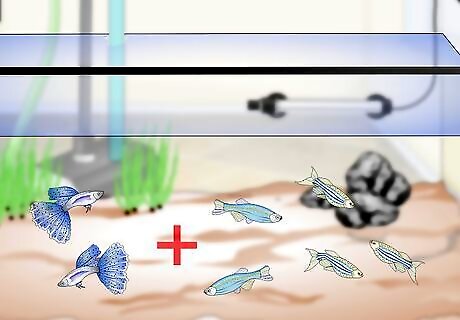
Select companion fish carefully. When deciding which fish to put in your tank, you’ll need to go beyond color and appearance and focus on behaviors instead. You generally need to either put non-aggressive or aggressive fish together. If you mix the types, then the aggressive fish will usually attack the others. For example, goldfish, guppies, and tiger pleco are all friendly fish that will coexist peacefully together. Angelfish and cichlids are two types of aggressive fish that can often live in a tank together without harming one another.
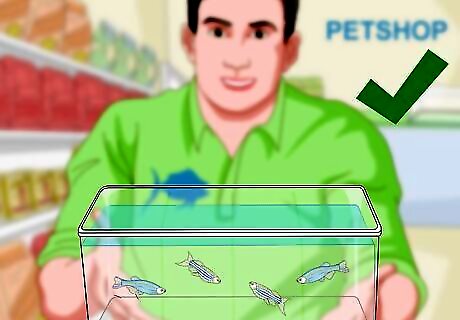
Buy from a reputable dealer or store. If you purchase from a pet store, you have the added security of seeing the actual fish that you are buying. Most stores also often a refund if the fish dies prior to a certain date. If you buy online, you’ll forgo any choice regarding the individual fish, but you will gain more fish breeds to choose from. If you do go the online route, choose a dealer that offers clear customer service connections via email or the phone. Look for positive reviews online as well. These can often be found in fish owner forums. Avoid wild-caught whenever possible. Wild-caught fish are often more sensitive, caught in inhumane ways, and harder to care for. As soon as you receive a fish from online, or before buying it in the store, look to make sure that it appears healthy. It should be active and swimming around at a steady pace. The eyes and gills should be clear of debris or mucus. The scales should be intact and scratch-free.
Setting Up Your Tank
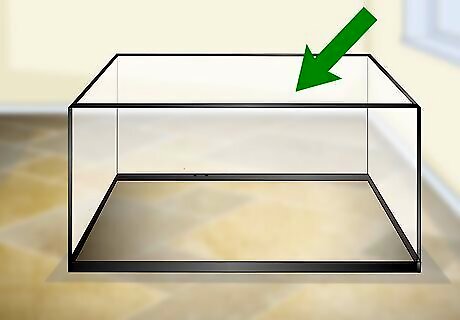
Get the right size tank. The bigger that your fish will get, or the more of them that you have, the larger your tank will need to be. As a general rule, a freshwater fish that grows to be one inch length should have 4.5 liters (1.2 US gal) of water in the tank. A saltwater fish measuring the same size should have 2.5 liters (0.7 US gal) of water. Multiply these figures by the total number of fish that you have to decide which tank to purchase. However, this rule doesn't always apply. Some energetic species, such as shrimp, require more room to thrive. You also need to consider the bio load of the fish (how much ammonia they produce). Higher bio loads need bigger tanks. For example, plecos, goldfish, and platies have high bio loads, while tetras and otocinclus have lower bio loads. When in doubt it’s better to get a slightly larger tank, as overcrowding can cause a number of health problems for fish. It can even lead to fish deaths due to poor water quality. Make sure to base your calculations on your fish’s full adult size, not their current size.
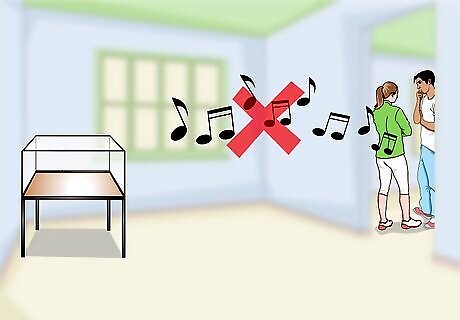
Place your tank in a good location. Fish tanks can be quite heavy, so invest in a quality stand and once you get it into position try not to move it around too often. Make sure to place your tank out of direct sunlight to avoid algae growth. It should also be on level ground to minimize the possibility of it tipping over. A quieter room without a TV or lots of foot traffic generally makes for a more peaceful environment for your fish. It’s also a good idea to not smoke in the same room as your fish, as this damages the air quality. If you have other pets or if your fish jump, remember to get a lid for your tank.
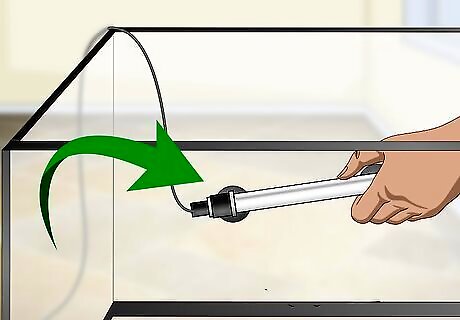
Install your heater. Most fish require that the water in your tank maintains a specific temperature, usually between 72 and 84 degrees Fahrenheit. However, some fish like goldfish are cold water fish and need lower temperatures. To keep the temperature regulated and steady, you’ll use a heater in your tank. Some heaters go under the gravel or other substrate. Others hang on the side of the tank. Follow the installation directions on the package. It’s important to place your tank near a functioning electrical socket, as you’ll need to plug in devices like your heater, light, and filter.
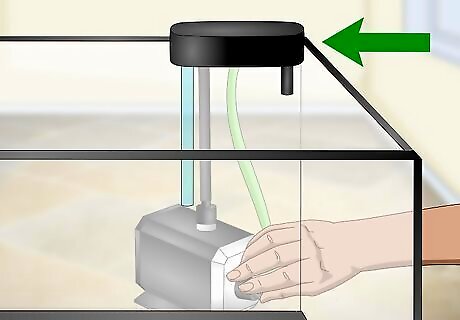
Install the filtration system. A filter will keep your water clean and remove many pollutants, such as fecal matter. There are mechanical filters that catch debris in traps that can be emptied. There are chemical filters that absorb pollutants with activated carbon. And, there are biological filters that use active bacteria to balance the chemicals in the water. A mechanical filter is generally the best option for a beginner, as they are fairly basic. Some filters should be placed under the gravel in your tank, whereas others hang from the back of your tank. There are also canister filters, which go inside the tank. Only clean the first filter media, near the back of the filter. It only needs cleaning if it's full of debris. Otherwise DO NOT clean the filter! This will cause ammonia and nitrite spikes and could kill your fish. The filter media will grow beneficial brown bacteria on it, which removes toxic chemicals from the fish waste. It is essential to keeping your fish alive.
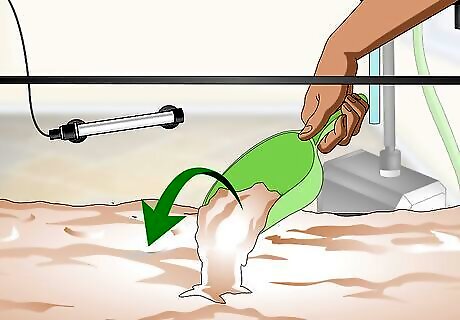
Add in your substrate. A good rule of thumb is that you’ll need one pound of sand, rock, or gravel per one gallon of water in your tank. Before placing your substrate in your tank, rinse it off thoroughly with tap water to remove any dust. Then, place the substrate gently in your tank with just a slight slope towards the front.
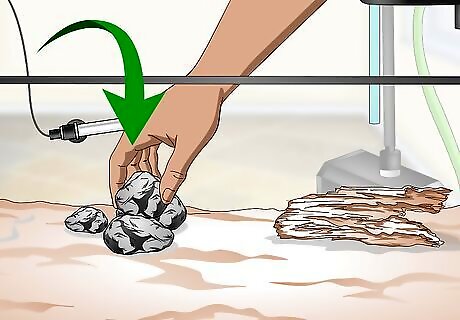
Select and place any decorations in the tank. Choose decorations that provide safe hiding places for your fish, but also look natural, such as driftwood or rock structures. It’s best to stick with only one large piece initially to avoid overcrowding your tank. Rinse off any objects with tap water prior to placing them in the tank. Driftwood will need to be boiled for 30 minutes and soaked for a week before placing in a tank. Try to balance out your decorations by placing taller or larger pieces towards the back of the tank. This will also make it easier to view your fish in action. Make sure that your decorations don’t have sharp edges, plastic pieces that can break off, or paint that might flake.
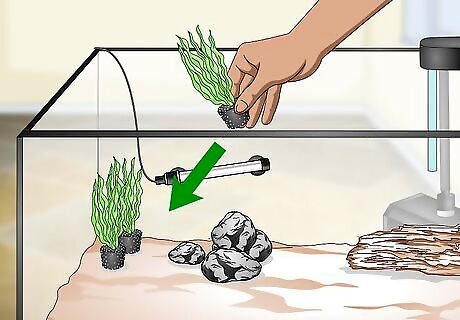
Select and place any plants in the tank. Many people opt for plastic plants, as they are easy to clean and come in a wide variety of vibrant colors. However, live plants have the benefit of increasing the oxygen levels in your tank, removing nitrates in the water, and also creating a more natural look. Rinse off your plastic or natural plants in tap water before placing them in the tank. Make sure that they are partially secured at the base by some substrate to prevent lots of movement. If you decide to add live plants, then you’ll want to consider their light needs. Most live plants will need at least 10 hours light a day. Amazon sword, java grass, water wisteria, hornwort, and java fern are a few examples of hardy live plants that are great for starter aquariums.
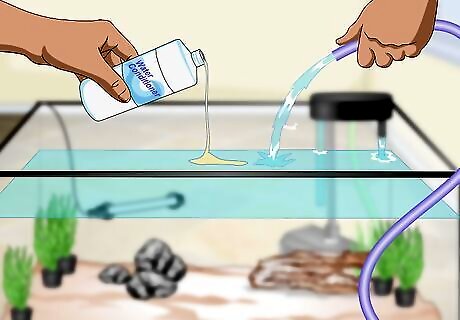
Condition the water and fill up your tank. Set aside enough water in buckets to fill up your tank. Treat the water with a de-chlorinating agent and wait until it takes full effect. The directions should be listed on the package. When the water is ready, gently pour it into the tank. Once the water is in your tank, put some fish food in and wait until brown beneficial bacteria is growing on the filter media. Test your water qualities. Once the ammonia and nitrites are 0ppm and the nitrates are below 20ppm, you can acclimate the fish. The tank usually will take six weeks to cycle, but the process can be sped up by adding beneficial bacteria or used filter media.
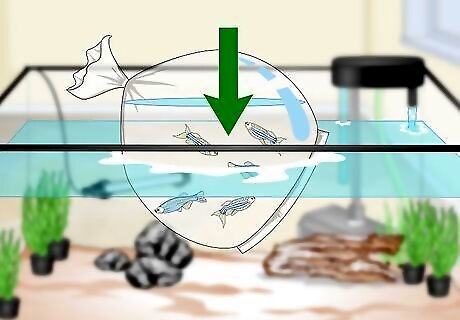
Float any new fish. Once you bring your new fish home, set the bag with them inside it in your tank for 15-30 minutes. Add ¼ cup of tank water into the bag and then reclose it and let it continue to float for another five minutes. Then, gently tip the bag into the water and watch as your fish swim away. Some fish, such as otocinclus, require drip-acclimation. To do this, tie a knot in air tubing and start a siphon by putting one end in the tank and sucking on the other end. Place the end you were sucking on into the bag with the fish. The water should slowly drip into the bag. Drip acclimate for about 30 minutes. Don’t skip this step as it helps to acclimate your fish to the new water qualities and temperature. It reduces the risk of shock.
Maintaining Your Tank and Fish
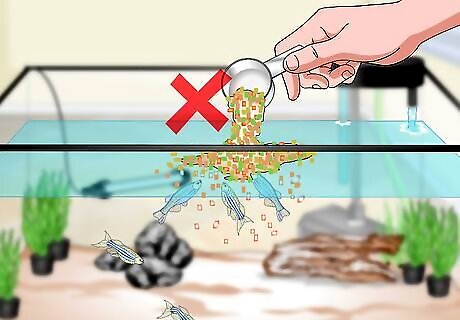
Don’t overfeed. Feeding your fish twice a day with the serving size the size of their eye is usually sufficient. Talk with your vet or the pet store about how much you should aim to feed per fish, but you can also adjust the amounts that you give based on how much is left over. Ideally, no food will remain in the tank after half an hour. Excess food can cause all sorts of problems, including clogging filters, ammonia and nitrite spikes, and contributing to algae growth. Feeding the right type of food is important as well. Most fish to well with flakes or freeze-dried food, but some bottom feeders will require sinking pellets.
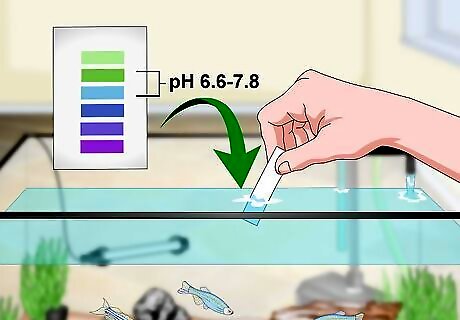
Test the pH levels weekly. Get a water testing kit and follow the directions to collect and measure the pH present in your tank. Make sure that your water falls within an acceptable range, for freshwater fish this is usually between 6.6 and 8. If your pH is too low, add crushed coral to the filter. If it's too high, add peat moss to the filter, or driftwood to the tank. These will tint the water slightly yellow, but it is completely safe for your fish.
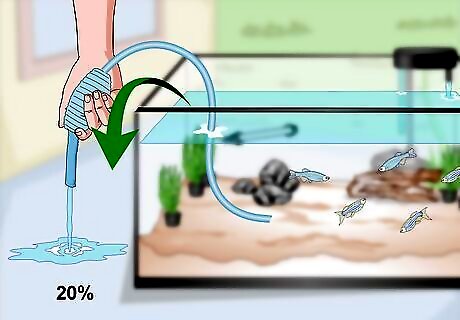
Do weekly partial water changes. For freshwater tanks, you’ll need to change about 20-30% of the water. Saltwater tanks generally need to be cleaned more. Use a suction wand to remove the water and pull out the debris from the substrate at the same time. Then, replace the removed water with fresh, treated water kept in additional buckets nearby.
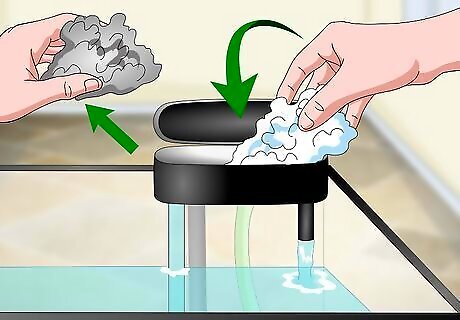
Clean your filter media if the filter is close to overflowing. Your tank filter can become clogged with debris, if left too long in the water. For most filters, you’ll need to pull them out completely and replace with new ones. However, in some cases, it’s possible to simply rinse the first filter media off with old tank water. Check your filter’s directions. Remember to only clean the first filter media; the one closest to the back. If you clean all of it, your ammonia and nitrite levels will rise because you removed all the beneficial bacteria.
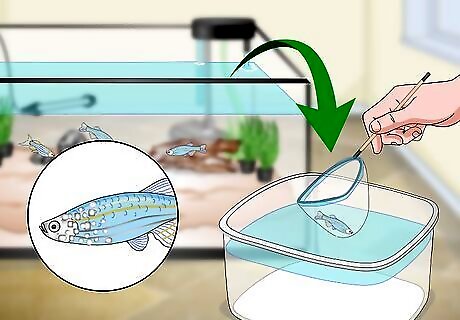
Treat any health problems. Watch your fish to ensure that they are swimming actively and maintaining a healthy coloring. They should be breathing freely and not gasping. Take a close look at their scales as well to ensure that no spotting or flaking is occurring. If you notice that one of your fish looks ill, scoop it out and isolate it in a separate tank for monitoring. Add needed medications. Make sure to remove any dead fish from the tank immediately. Most medications should never be added as a preventative measure.
















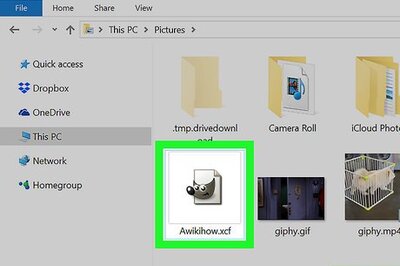

Comments
0 comment